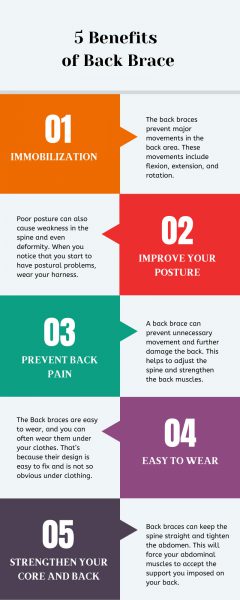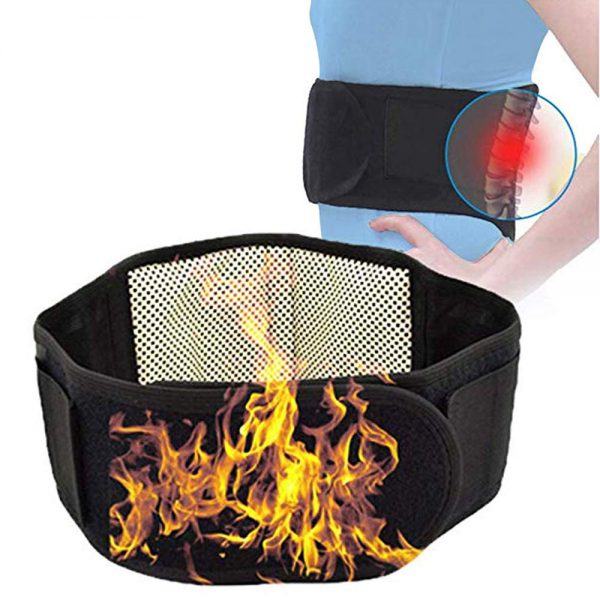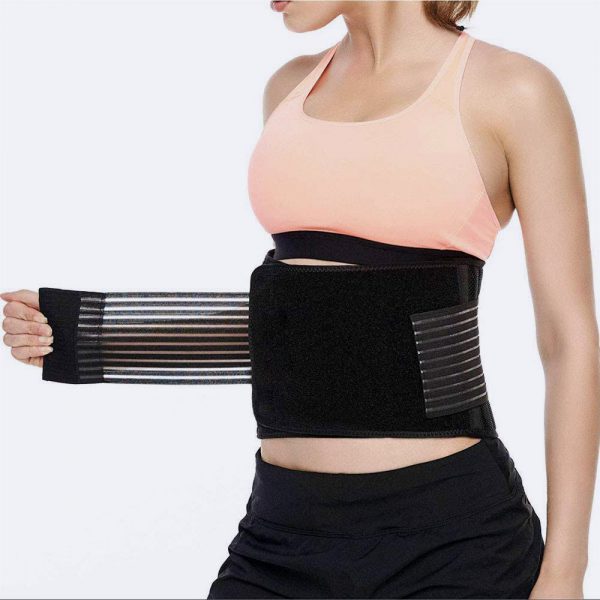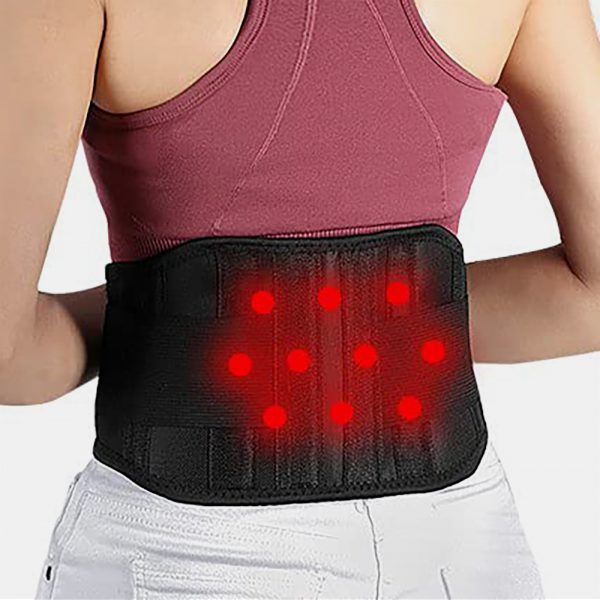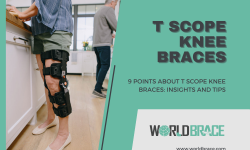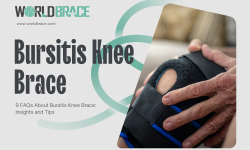BEST Back Brace Supplier in China
WorldBrace is the manufacturer of choice for high-quality back braces in China since 2001. We offer a one-stop back supports solution for your business.
Consider purchasing at WorldBrace company. We have a strong R&D team to design, develop, manufacture, and sell the best quality back brace support. We have been the trusted Chinese factory of back support braces for more than 20 years. WorldBrace has a full back support line including back pain belt, back belt, lumbar support belt, lumbar belt, lumbo sacral belt, lumbar corset, spinal brace, si joint belt, lumbar brace, waist support belt, lumbar support brace, spine belt, backbone belt, support belt, back pain relief belt, waist support, lower back corset, lumbar corset belt, spine support belt, back pain support, spine support, back pain support belt, etc.
If you are looking for the best back support suppliers and wholesalers? Don’t hesitate to contact us to drive your brand’s growth. Contact us about your custom back supports requirements.
Custom Back Brace Manufacturer
Best Back Supports Wholesaler
- Low MOQ from 1000 PCS with logo
- Products conform to EU and FDA standards
- Pass through Walmart, Target audit
- ISO9001, GMP Certification
- Custom back braces samples in 7 days
- Over 20 years of back brace OEM/ODM/OPM experience
The Ultimate Guide For Custom Best Back Brace
What is a back brace?
A back brace can kept your spine in one position and be supported to avoid any potential back problems and properly heal and restore your spine with less pressure after back surgery.
Do back braces work?
Most back braces have a compression strap to fit the brace tightly around your torso. When you pull the shoulder, it compresses the core muscle tissue. This reduces the volume of soft tissue in the abdomen, which acts directly as a stabilizer around the spine.
A back brace can provide additional support for your spine and muscles. Maintaining the body’s correct posture helps reduce the pressure on the spinal nerves, muscles, and joints, reducing pain.
Using back support can also help you complete daily activities without putting extra pressure on your back, especially bending over and lifting weights. In addition to good lifting techniques, a back brace can help acute injuries heal faster, also prevent further injuries to areas that have already been injured.
Back brace benefits
Are you considering wearing a back brace? The following are the back brace benefits:
It is important to note that the back brace is not meant to be worn all day. Do not wear the brace for more than 2 hours a day. Excessive use of the harness can cause muscle atrophy and weakened core strength.
1. Immobilization
Unnecessary exercise can help prevent back pain, especially if you have had a back injury or spinal surgery in the past. In some cases, immobilization is essential for the proper healing of your back.
The back braces prevent major movements in the back area. These movements include flexion, extension, and rotation. This helps prevent full use of your back and prevents back pain and further injuries.
2. Improve your posture
Your spine should be in an upright position, with your shoulders back and your chest up. But how many of us sit and stand in this position? Many of us are listless and bend our spines.
This not only leads to poor posture but also severe back pain. Poor posture can also cause weakness in the spine and even deformity, making you more vulnerable to injury. The back will force your spine in a straightened position. When you notice that you start to have postural problems, wear your back brace.
3. Prevent back pain
Back pain can interfere with many aspects of our lives. It can make work, exercise, and even simple daily functions unbearable.
People with all kinds of back pain will notice that specific movements and postures exacerbate their back pain. As mentioned earlier, your back must restrict specific movements for your back to heal. This is where the back support comes in.
A back brace can prevent unnecessary movement and further damage the back. This helps to adjust the spine and strengthen the back muscles. Your back can heal, and your back pain will be relieved.
Back braces can also get support from essential back parts (such as the spine, intervertebral discs, and vertebrae). This reduces the pressure on these areas to support the back, reducing pain.
4. Easy to wear
The Back braces are easy to wear, and you can often wear them under your clothes. That’s because their design is easy to fix and is not so noticeable under clothing.
5. Help strengthen your core and back
Are you trying to get a better figure? Wearing a back brace can provide countless strengthening benefits for your back and core.
Your core is the center of your body. Your core should be the area that supports your body-not your back. But many people have weak cores, so the support falls on their backs. But this can cause pain and even injury.
Back braces can keep the spine straight and tighten the abdomen. This will force your abdominal muscles to accept the support you imposed on your back, thereby helping to strengthen your abdomen.
In addition, the back brace will help strengthen your back and spine by forcing the muscles to align.
When to use back bracing?
Conditions where a back brace may be helpful: A back brace may help heal and relieve pain in the following conditions:
Ankylosing Spondylitis
Ankylosing spondylitis is an inflammatory disease that, over time, causes some small bones in the spine (vertebrae) to fuse. This fusion makes the spine less flexible and can lead to a hunched posture.
Hunchback (Kyphosis)
Hunchback (Kyphosis) is a condition of excessive bending of the upper back, which causes your upper chest and waist circumference to move forward. This situation makes you look hunched over and listless. For a healthy spine, the angle of the natural curve is around 20-45 degrees. However, those with a kyphotic spine have abnormal bends that exceed an angle of 50 degrees.
Teenagers with mild to moderate kyphosis may need to wear a back brace. The back brace is worn while the bones are still growing, preventing the curve from worsening. Wearing a brace may feel restrictive at first. But most people get used to them after a while.
Post-operative healing
Rigid back braces may be prescribed after spinal surgery. The purpose is to reduce the pressure on the spine, increase stability, and restrict movement and micro-movements to provide a healthy recovery environment.
Isthmic spondylolisthesis
Using rigid back braces to treat isthmic spondylolisthesis has been proven to minimize vertebral slippage and significantly improve walking ability and pain. Rigid braces can limit excessive movement of the fractured segment, help control pain, and reduce damage to joints, nerves, and muscles.
Spondylolysis
Like spondylolisthesis, it is recommended to use a semi-rigid or rigid brace to minimize pain and fretting at the level of the fractured vertebral body, reduce pain and possibly make the fracture heal.
Osteoarthritis
Using a rigid or semi-rigid back brace can reduce unstable and painful micro-movements caused by osteoarthritis of the spine. In addition, the brace can reduce the pressure on the affected small joints, reduce pain and make daily activities easier, such as moving from a sitting position to a standing position.
Vertebral compression fractures
For vertebral compression fractures, it is recommended to use rigid or semi-rigid back support to reduce the fracture or micro-motion at the level of the affected vertebral body and reduce the pressure on the spine.
Degenerative disc disease/lumbar herniated disc
When the intervertebral disc is ruptured and herniated, a rigid or semi-rigid back support can help stabilize and reduce the micro-motion of the affected spinal segment. Back braces can also limit bending and twisting and help carry some of the weight usually carried by intervertebral discs.
Spinal stenosis
The lumbar spinal stenosis brace is designed to reduce the pressure on the lower spine and limit its micro-movements, both of which can cause nerve root irritation and nerve root pain. The brace can help adjust posture or transfer weight to the abdomen to reduce spinal pressure in some cases.
Muscle tension and strain
The back brace can relieve muscle strain in the lower back. Straps can help relieve muscle tension by reducing pressure on the spine, thereby reducing the muscles’ amount of strength to support the spine. In addition, the heat from the brace can help relax tense muscles.
Back braces types
Rigid (hard) braces
These braces were fitted plastic mounds and rigid (usually metal) supports that can significantly restrict movement. Rigid braces are often used for moderate to severe pain and instability, such as helping spinal fractures heal or after back surgery.
Soft braces
Soft braces are made of soft materials such as cotton, elastic blends, canvas, or neoprene. These braces include corsets, waist belts, and sacroiliac belts. The soft braces can limit the forward movement of the spine and assist in setting up spinal fusion or supporting the spine under pressure.
The corset brace looks similar to a female corset and allows limited bending. Corsets usually include vertical metal or plastic struts on the brace’s front, back, and sides to provide stability and some movement restriction.
Waist belts and sacroiliac belts provide more restriction during exercise and are usually made of stronger fabrics without support.
Semi-rigid braces
The semi-rigid braces combine the elements of flexible and rigid braces in an overall design. This was achieved by adding rigid supports or additional rigid pads and straps to the flexible support body. Sometimes these added rigid supports are detachable, allowing patients to customize the level of stability according to their unique needs.
How to choose a back brace?
1. Level of support
The back braces can be rigid, semi-rigid, or flexible. The rigid type provides stability for people suffering from moderate to severe pain and unstable conditions, such as health problems after fractures or traumatic accidents.
The flexible type consists of softer materials to limit excessive movement, also provide compression while providing more freedom and flexibility.
The semi-rigid bracket combines the two and provides a flexible bracket for the body, with a rigid panel around the device.
2. Size and fit
Most off-the-shelf products have standard sizes, with adjustable belt wings or hook-and-eye locks to ensure a fit. Others are customized according to the human body.
3. Materials
Flexible braces are usually made of cotton, canvas, or neoprene, while rigid braces can be made of metal, leather, or plastic. Neoprene back braces could retain heat to induce sweating.
4. Durability and maintenance
Machine washable braces are easier to maintain. Braces with Velcro may wear faster, while elastic braces may stretch after regular use.
How to make a custom back brace?
The major manufacturing production processes of back braces are:
1. Sourcing Raw Material → 2. Neoprene Slicing → 3. Composite & Lamination → 4. Embossed & Perforated (optional) → 5. Pattern Making → 6. Tailoring & Cutting → 7. Printing → 8. Sewing → 9. Finishing Quality Control → 10. Packing And Dispatch
It usually takes 30 days more production lead time to order from raw material to final shipment ready. For more details you want to know, you can contact WorldBrace Team for technique support.
What technology can we provide in custom back braces?
There are also many different designs, using different materials such as elastic, soft plastic, hard plastic metal, Velcro, and laces.
Copper back brace
The natural properties of copper prevent stains and odors from bacteria. You can choose copper fabric to make a back brace.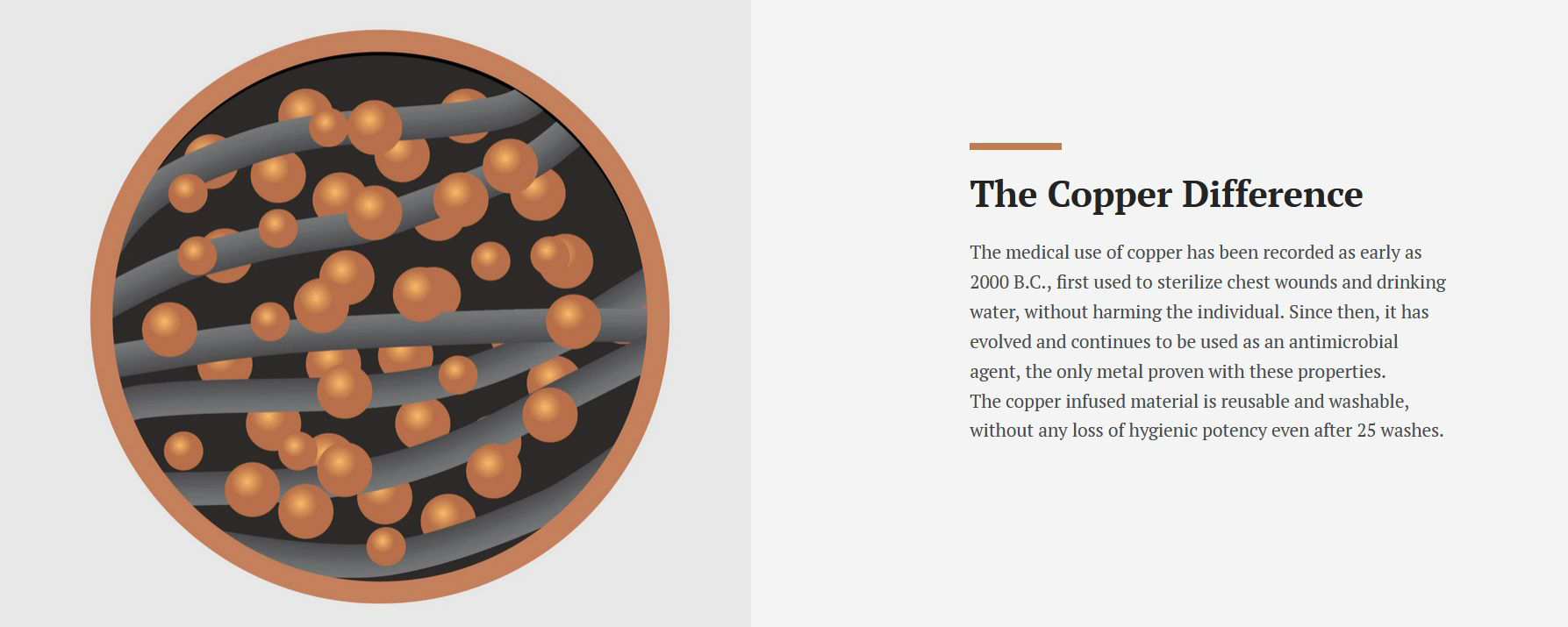
Heated back brace
A heat back belt can provide controlled heating which dilates the blood vessels to promote blood circulation and in turn may decrease muscles spasms. It can be used to reduce the sensation of pain in the lower back.Adjustable Back Brace
Generally, a back brace has an adjustable function. It was usually divided into two layers, inside and outside, and the main elastic band in the inner layer plays a supporting role. The outer elastic band could be adjusted the tightness.
Magnetic Back Brace
Our custom back brace can have a magnet built into the back, which may help stimulate blood circulation in the lower spine.
Metal Back Brace
Our customized back brace could choose steel springs or metal plates to help keep the back straight. The effect of steel springs was not as good as metal plates, but the comfort is better than the metal plate.
Velcro Back Brace
The primary function of Velcro is to adjust the tightness of the back brace.
Neoprene Back Brace
Neoprene is our primary material to produce a back brace.
Back Brace With Ice or hot Pack
People can use hot or cold compresses to relieve back pain and muscle aches. We can add gel to the back brace to increase the product’s selling point. You need to put the gel in the refrigerator or microwave before use.
How long should I wear a back brace?
It depends on whether you are in severe pain and what activities make it worse. The more pain you have, the more often you want to use the brace.
If your pain gets worse during physical exercise, you should only wear it at that time.
If you feel pain while resting, you should not wear a back brace because it will become less beneficial, and excessive use of a back brace will weaken your posture muscles and make your spine more vulnerable to further damage.
If you have slight pain or no pain at all, you should not wear a back brace. If you are about to perform an activity that causes fatigue and may cause back pain, it may be a good idea to wear it. In this case, you can put it on and take it off as needed.
In most cases, the prescription for back braces is short-term, ranging from a few weeks to a few months. An exception is adolescent scoliosis, in which case the back brace needs to be worn most of the day until the patient stops growing.
Most doctors recommend wearing the back brace for up to a few hours a day. Over time, your muscles may weaken and become overly dependent on the brace, causing new problems. You don’t want the brace to do all the work for you all day, every day.

How to wear a back brace?
Three easy steps to put on the strap
1. Wrap the bracket around the back so that the wings rest on the sides of the torso
2. Connect both ends across the abdomen
3. Make more precise adjustments to the tightness and pressure of the brace; usually, use the two pull tabs on both sides of the brace for small adjustments
Due to back pain, it may not be easy to reach out and wrap the brace behind the body. It is recommended to seek help from a partner or friend.
When putting on the brace, the pain can also be avoided by first placing the brace on the chair and opening the wings so that the wings are on both sides of the body when sitting. Then, grab the wing, stand up and fix the front of the bracket.
It is usually necessary to wear a shirt under the brace to minimize skin irritation. Some doctors may even recommend or provide the best shirt. Generally speaking, a fitted shirt made of soft cotton fabric can prevent irritation. Loose shirts may increase the burden on the skin.
How to clean a back brace?
The back brace manufacturer usually provides specific cleaning instructions, and these instructions should be followed to maintain the life and effectiveness of the brace.
Most back braces cannot be machine washed, or dried-it is usually recommended to wash the back brace by hand with water and mild soap. Any additional fillers or panels should be removed first and washed separately. The brace should be laid flat or hung to dry.
Ensure to rinse and dry the brace thoroughly before wearing it, as soap or wet braces are more likely to irritate the skin. It is also good to use a lint roller to remove any dirt, dust, or debris from the brace.
Can you sleep with a back brace to bed?
Generally, many doctors do not recommend that patients wear a brace while sleeping.
If you have a medical condition such as scoliosis, it may be reasonable to wear a back brace while sleeping.
When you want to buy a brace that you intend to use while sleeping, make sure it is made of breathable material. This way, you can avoid the discomfort caused by inferior products.
If you suffer from backache-related injuries, it’s best to sleep on your side.
Where can I buy a back brace?
If you want to buy a back brace, you can buy it from Walmart and Amazon. The price is about $15-$30. But if you’re going to buy in bulk or build your back brace brand, it is best to purchase in China.
Many back braces manufacturers in china like “WorldBrace” can make much cheaper but same quality back braces you buy in the USA. And many brand back brace is made in china. The price of back braces may be only one-third or even one-fifth of what you bought in the United States. More importantly, we can also provide a complete set of solutions from design, production, packaging to transportation.
The best back brace manufacturer in China
If you are looking for a custom back brace or have any queries about the custom back support, please feel free to contact us through email. We have experts that are always ready to assist you and will contact you back within 24 hours to tell you about the possibility of customizing your back brace.
WorldBrace is the best back brace manufacturer in china. Contact us today and find out how, together, we can create a unique back brace that is guaranteed to impress.

